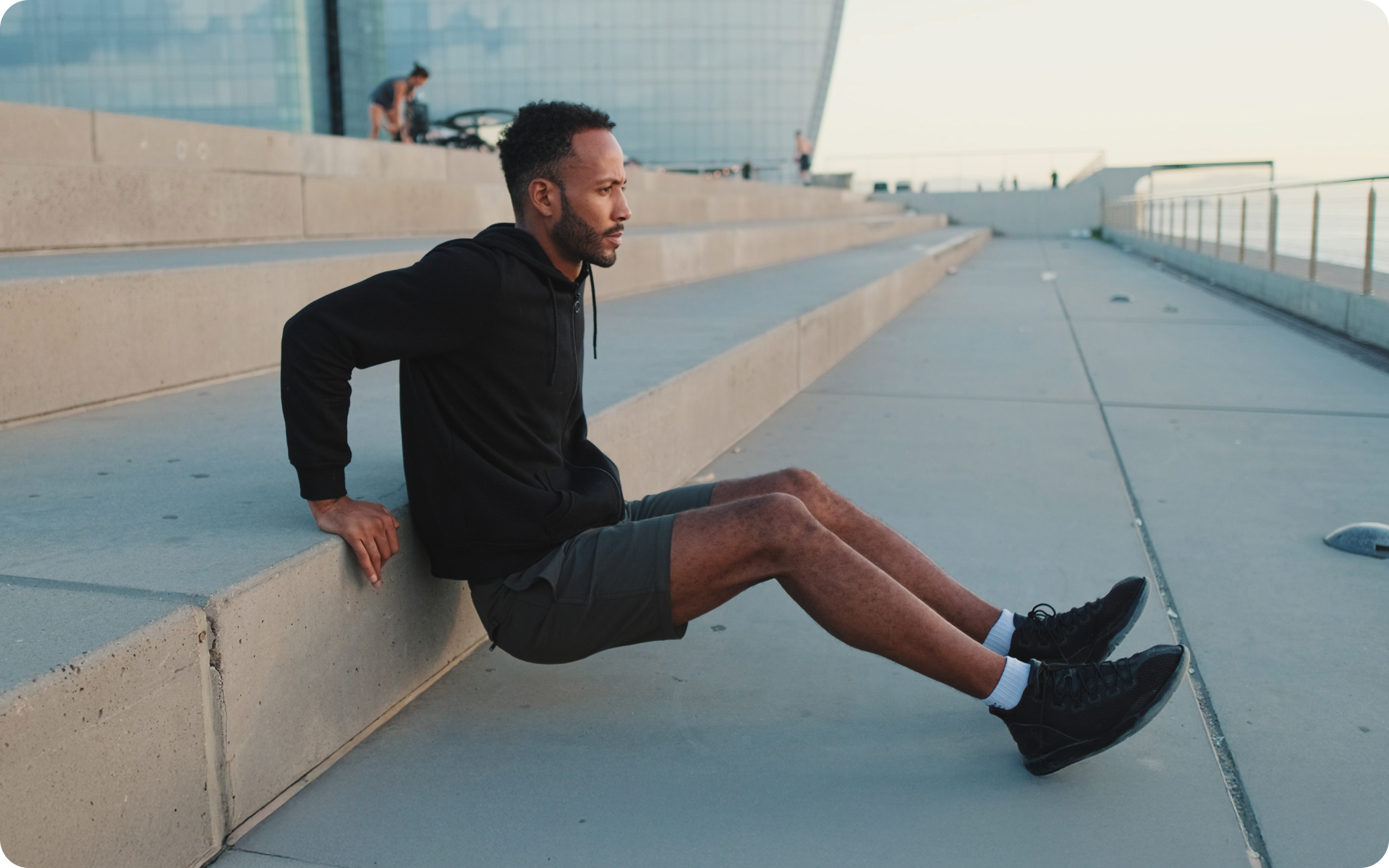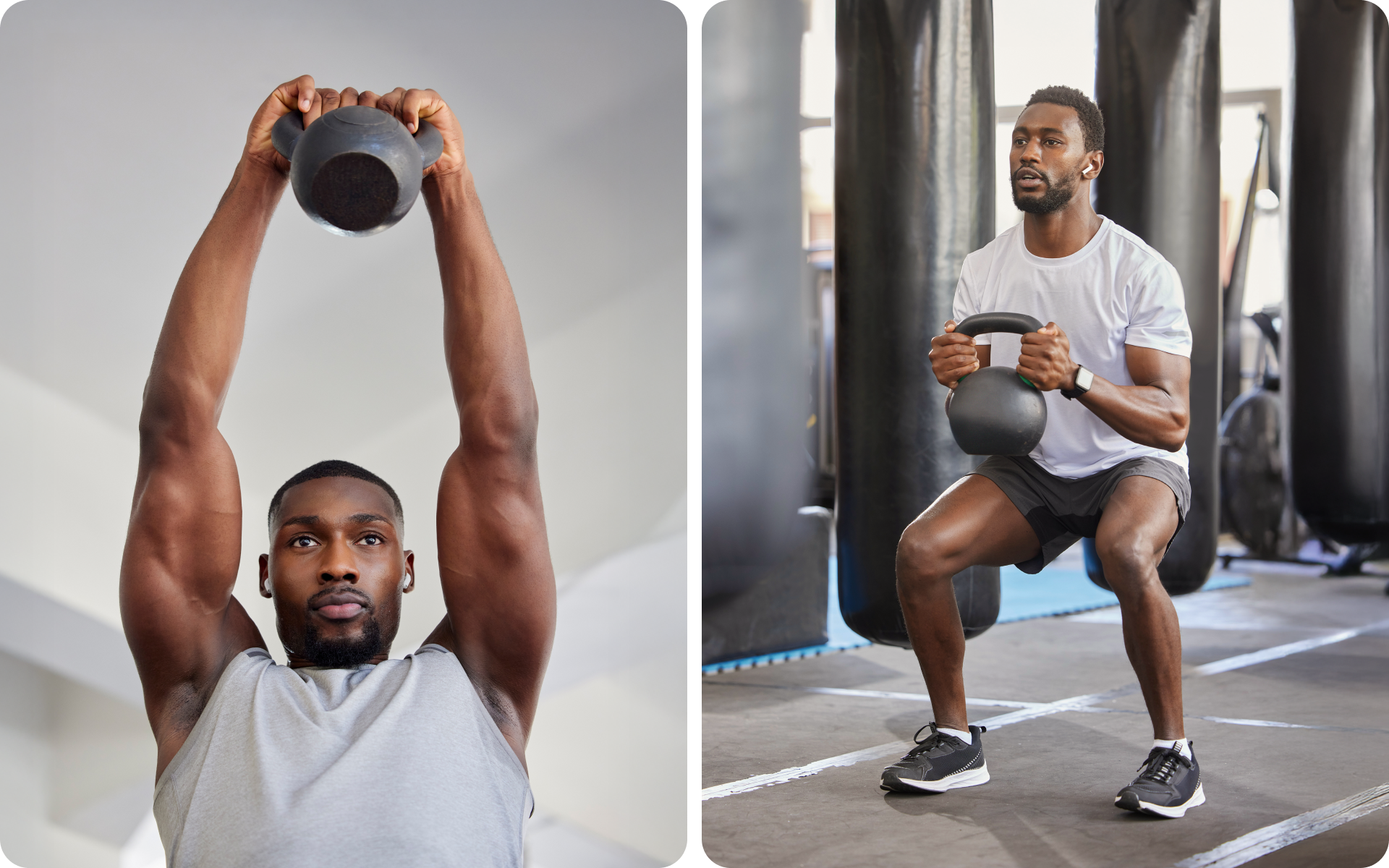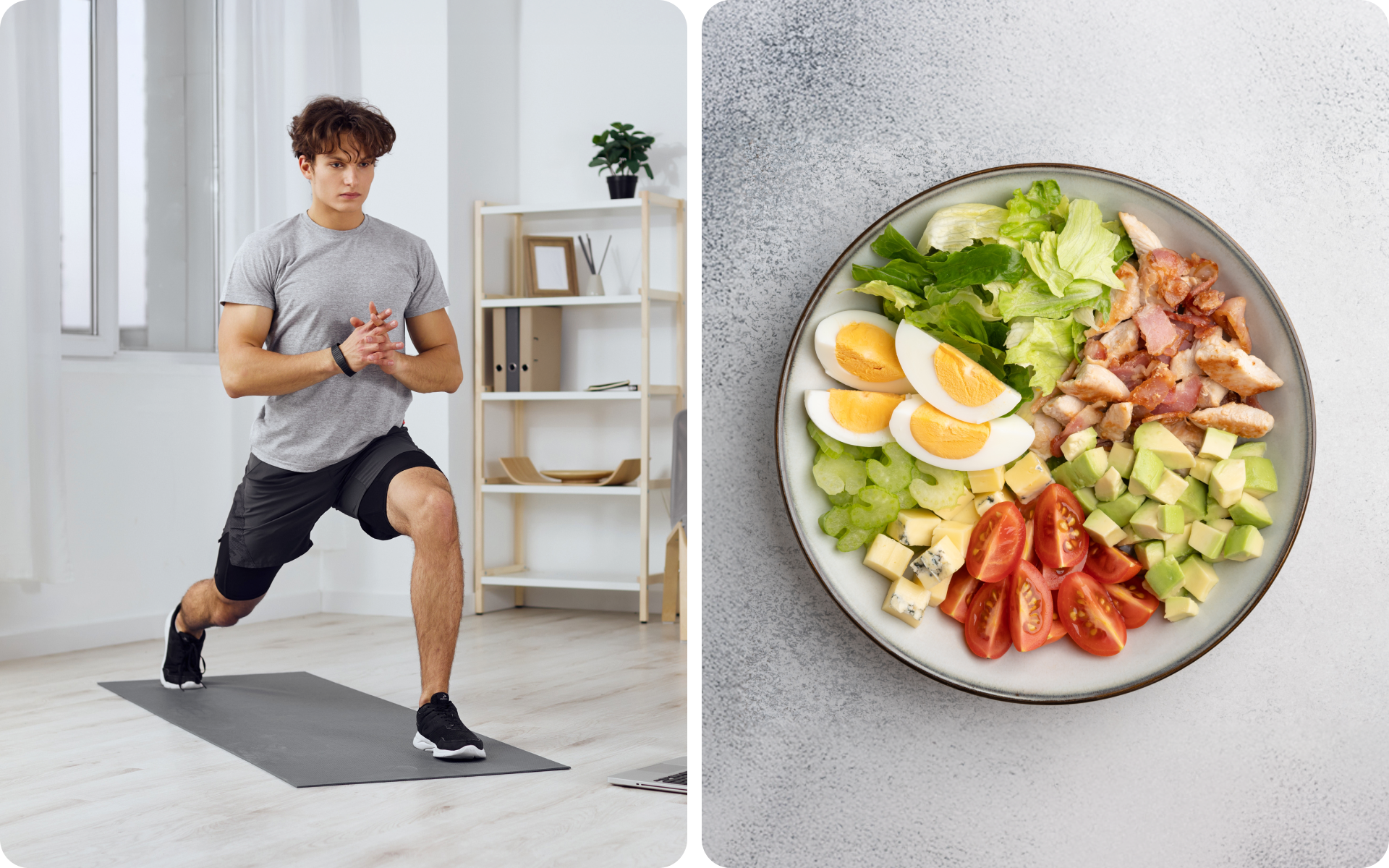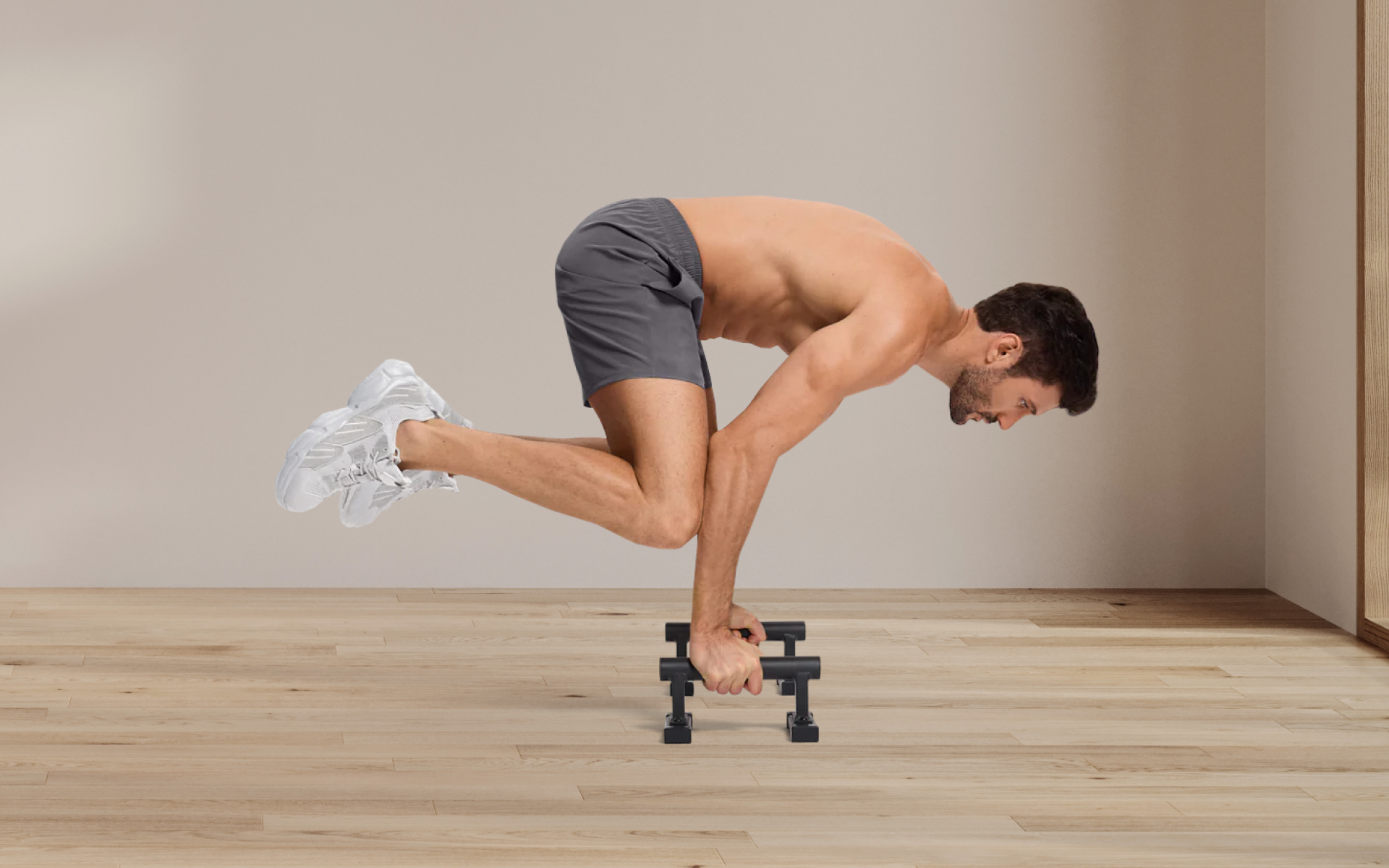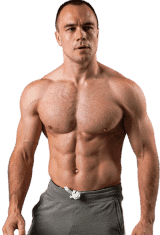Exercise is important for a healthy lifestyle, but for some it’s more than just that – it’s a way of life. A professional athlete workout plan is more demanding and intense than a normal fitness routine. It requires more time and a great deal of discipline.
To achieve an athletic body, you need to follow a personalized workout plan, eat healthily, and say no to junk food and alcohol. The main aim is to lose fat, build muscle, gain strength, and get a lean, defined physique. Below is an athlete workout plan and the tips that will help you train like a professional athlete.
How to Train Like an Athlete
Many professional athletes have a routine that requires more than one workout routine per day, practice for their sport, and a nutrition and supplement plan to fit their needs.
As much as different sports require different training programs, they do have some similar characteristics, including:
- Speed
- Strength
- Power
- Endurance
- Performance
Strength
In sports, strength is defined as the ability to do work against resistance. Strength is fundamental for success in any sport. You can also think of strength as the ability to accelerate a mass from its stationary state, which results in the production of muscular force (17) (6).
This can be measured based on the amount of weight lifted for one rep. Upper and lower body strength are measured differently and the most common strength tests include bench press for the upper body and squats for the lower body. In sports such as weightlifting, boxing, rowing, and weight throwing, strength is the most important physical characteristic. Having both strength and speed will make you an enviable athlete.
Our Calisthenics and Weight Training blog post details how to use your body weight as a tool for strength training.
Speed
All good athletes are quick. Whether you’re a swimmer, skater, cyclist, or sprinter, speed is essential. Speed is not just about how fast you can move and involves acceleration, maximal speed of movement, and maintenance of speed. Speed can only be achieved with proper training. Remember the goal is to be a great athlete with a to-die-for physique, while avoiding injury as much as possible.
Muscle Conditioning
This involves workouts that target muscles in your whole body to help build, shape, and tone your muscles (7). Performing well isn’t enough; you also need to look the part. What we’re talking about is muscular legs, a broad chest, and perfect abs.
Muscle conditioning also means improved endurance and increased flexibility (3) (6). Weight lifting is often used to achieve this. However, bodyweight exercises such as squats, burpees, mountain climbers, split jacks, and lunges can also be used.
Training like an athlete requires you to put in a lot of hard work as it can be intense. You need to make sure you keep your stress levels low and get enough sleep so your muscles can recover and grow properly and so you’re not prone to injuries (2). It also requires following a nutrition plan that cuts back on refined carbs, fast foods, sugary drinks, and alcohol to get the most out of this workout plan.
So, whatever sport or activity you set out to do, this workout plan will help maximize your performance. The best part is that you’ll make all-round improvements and be able to do well when it comes to hiking, basketball, obstacle course racing, and cycling.
Dropping pounds by the dozens without putting yourself through the wringer is everyone’s weight loss pipe dream. But what if we told you that the BetterMe app can make that happen? Keep yourself in prime shape with our fat-blasting workouts, delicious budget-sparing recipes, and body-transforming challenges with our app!
Pro Athlete Workout Plan
Athlete training requires that you exercise 5 days a week for approximately 60-90 minutes each day. This plan is of beginner to intermediate intensity, so it works well for both beginners and amateurs. Both men and women can use this sample training plan as a female athlete workout plan is not particularly different from a male plan.
Below is a sample athlete workout plan:
Day 1: Lower Body
Equipment: Dumbbells, barbell
- Single leg hip thrust – Do 3-4 sets of 6-8 reps for each leg.
- Dumbbell squat jump – Do 3-4 sets of 10-15 reps and rest for 60 seconds in between.
- Barbell hang power clean – Do 4 sets of 3-5 reps with a 90-second rest in between. To increase the load, do 1-2 warm-up sets before you start.
- Squats – Do 5 sets of 5 reps each with a 2-minute rest period. You can do either front or back squats, but choose one and stick to it.
- Dumbbell Romanian deadlift – Do 4 sets of 10 reps with a 60-second rest period between sets.
- Goblet Bulgarian split squat – Do 3-4 sets of 8-10 reps per side and rest for approximately 60 seconds.
- Leg presses – Do 3-4 sets of 8-12 reps and take a 90-second rest period.
Day 2 – Total-Body Strength and Conditioning Circuit I
Warm-Up
- Side lunge – 1 set of 10 reps on each side (hold for 2 seconds).
- Butt kicks – 1 set of 30 seconds.
- Glute bridge – 1 set of 10 reps.
- High knees – 1 set of 30 seconds.
Workout
Do 3-4 rounds.
Equipment: Dumbbells, cable machine, medicine ball, box
- Alternating dumbbell bench press – 20 reps (10 reps per arm).
- Jump squat – Do 10 reps.
- Standing cable chop – Do 10 reps on each side.
- Medicine ball rotational throw – Perform 10 reps each side.
- Burpee – 10 reps with a 60-second rest period.
- Push-ups – Do 30 reps. Do 10 push-ups in each of the 3 ways: diamond, close grip, and wide grip.
- High box jump – Do 10 reps.
- One-arm dumbbell row – Do 10 reps on each arm.
- Pull-ups – Do 10 reps.
- 50-meter sprint
Day 3 – Upper Body
Equipment: Barbells, dumbbells
- Subscapular pushup – Do 3 sets of 6 reps. At the top, pause for at least 2 seconds.
- Barbell push press – 4 sets of 4-6 reps with a 90-second rest period. 1-2 warm-up sets to increase the load.
- Barbell bench press – Do 4 sets of 5 reps with a 2-minute rest duration.
- Dumbbell incline bench press (3-4 second eccentric) – Do 3-4 sets of 10 reps with 45 seconds of rest between sets.
- Dumbbell chest-supported row (3-4 second eccentric) – Do 3-4 sets of 10 reps with 45 seconds of rest in between.
- Dips – Do 3 sets of 8-12 reps and rest for 30 seconds between sets.
- Inverted row – Do 3 sets of 8-12 reps and rest for 30 seconds between sets.
- Alternating dumbbell biceps curl – Do 3 sets of 20 reps (10 per arm).
- Dumbbell skull crusher – Do 3 sets of 12 reps with 30 seconds of rest between sets.
Day 4 – Rest
Here you can choose any activity of your choice that helps you relax, such as taking an outdoor walk, leisurely cycling, stretching, meditation, or yoga.
Day 5 – Power Production Circuit
3 Rounds
- Sprint start – Do 5 reps. Rest for 30 seconds between each.
- 3 hurdle drill – 30 seconds (you’ll need 3 low hurdles).
- Explosive push-ups – Do 10 reps.
- Over-the-line jump drill – 10 reps for the first part and 30 seconds for the lateral jumps.
- 5-10-5 drill – Do 10 repetitions.
- Lateral bound – 10 reps on each side with a 60-second rest period.
Day 6 – Total-Body Strength and Conditioning Circuit II
Do 3 rounds
Warm-Up
Equipment: Swiss ball, medicine ball
- Cow/cat yoga pose – Do 1 set of 10 reps.
- Swiss ball leg curl – Do 1 set of 10 reps.
- Side plank – Do 1 set and hold for 20 seconds on each side.
Workout
Equipment: Pull-up bar, kettlebell, dumbbells, medicine ball
- Pull-ups – Do a total of 10 reps.
- Goblet squat – Do 10 reps.
- Farmer’s walk – Walk 30 yards out and another 30 yards back.
- Push-ups – Do 10 reps.
- Mountain climbers – Do 20 reps on each side with a 60-second rest period between sets.
- Weighted burpees – Do 10 repetitions. At the end of each, lift the dumbbells overhead.
- V-ups – Do 15 reps and rest for 60 seconds.
Day 7 – Active Rest
Do some light exercise and remain active. This can be something as simple as a hike, a 60-minute walk, or some light cardio.
Read more: 24 Weight Loss Smoothies, 2 Diet Plans, and 5 Belly Fat Smoothie Secrets
How to Get the Most out of a Pro Athlete Workout Plan
While sticking to your workout plan is important, it may not be enough. Habits such as going to sleep late at night and eating fast foods can derail your efforts. Below are some tips to help you reap the maximum benefits from an athlete workout for strength plan:
Warm-Up and Cool Down
Warming up is important whenever you exercise. A warm-up prepares your body for a workout. It increases blood supply to your muscles and raises your body temperature. Warming up also reduces the risk of injury and muscle stiffness (20).
A cool down allows for the recovery of your post-workout blood pressure and heart rate. It enables your heart and vessels to ease out of the workout session (20).
Go for dynamic exercises rather than simple ones. To warm up, do jumping jacks, side shuffles, squats, lunges, or leg swings. To cool down, do the reclining butterfly pose, child’s pose, stretching, or light walk.
Use our Calisthenics Warm Up 101 blog post as a guide for warming up.
Hydrate! Hydrate!
This can’t be emphasized enough. Drinking plenty of water is essential in everyday life, not just during workouts and sports. Water enables the proper functioning of muscles. It also regulates temperature, lubricates joints, and transports nutrients (11).
So, if you’re dehydrated, your body won’t work optimally and your muscles will be strained. You may also consume electrolyte drinks to help improve performance (13).
Eat Healthy Meals
Working out regularly requires proper fueling. Therefore, you can’t continue following your low-calorie or restrictive diet. This is because you need energy when you exercise.
Lean protein is one of the key components of your diet at this time. Protein helps build muscle and prevent loss of muscle mass (5). The best sources of lean protein include tuna, salmon, lean beef, chicken, Greek yogurt, eggs, and low-fat dairy.
Carbs are equally important. During exercise, your glycogen stores are used up, and eating carbs after a workout will replenish these stores (8). Eating a combination of protein and carbs also helps maximize glycogen and protein synthesis (7). Incorporate some healthy fats such as avocado, olive, and coconut oils into your post-workout diet too for improved satiety.
Get Enough Rest
It’s pretty easy to overtrain. When you exercise without rest, your muscles don’t recover properly and the effect is decreased performance and fatigue. This often results in mood changes and increases the risk of injuries. This condition is referred to as overtraining syndrome or burnout (10).
To avoid this, make sure you get about 7 to 9 hours of sleep and properly time the rest intervals. Also, take rest days. On rest days you can opt for active or passive recovery. This ensures proper muscle recovery and optimal athletic performance.
Dress for Success
Can you imagine what it would be like if you were to exercise in tight jeans and a polo-neck sweater? Uncomfortable, right? It’s important to invest in the right pants, shirts, shoes, and sports bras.
Here are a few pointers:
- Choose breathable fabric and avoid clothes that are made from plastic and rubber-based materials.
- Consider cotton shirts and pants as they absorb sweat.
- Wear loose and comfortable fitting clothes.
- When it’s cold, dress in layers.
- Find shoes that fit properly and provide proper heel and foot support.
Don’t Stress
Stress is a natural human response to a challenge or demand. In the short term, stress can be positive as it helps you overcome a challenge. However, in excess it can be counterproductive.
Excess stress results in the overproduction of the stress hormone, cortisol. This stimulates your fat and carbohydrate metabolism. It also results in an increased appetite, which can cause you to gain abdominal fat (14). One of the goals is to get an athletic physique and weight gain will sabotage these efforts.
If you’re experiencing any kind of stress, take some time to destress. You can meditate, talk to a friend, watch your favorite comedy show, write in your journal, or do any other activity you love.
Stay Within Your Limits
It’s important not to push yourself too hard. Start slow and as time progresses and your body adapts to the stress, you can increase the intensity of your workouts (12). Also, listen to your body and get rest when you need it.
Opt for Active Recovery
Active recovery is an effective way of speeding up muscle recovery. It involves doing low-intensity movement after your routine strenuous workouts. Active rest will help improve your performance, eliminate toxins, increase blood flow, and reduce the build-up of lactic acid in muscles (19).
Do low-intensity work outside on some rest days. Anything from a walk to 15 minutes of dynamic stretching can be beneficial.
Get a Training Partner
One of the best ways to stay motivated is to find a training partner. This could be a friend or co-worker who shares the same workout interests as you.
A workout partner will help you stay focused and keep you accountable (1). They also can help create a friendly competitive environment that gets things done and even more. If you’re worried about losing motivation along your journey, you should consider a workout buddy.
Want to build an attention-grabbing bubble butt, blast away fat that’s stored in all the wrong places, spring-clean your diet, turn back the clock on your skin, skyrocket your self-confidence and shatter your insecurities? Check out the BetterMe app and set this plan in motion!
What Type of Workout Is Best for Athletes?
The best workout for athletes is sport-specific. However, there are a few key components that should be included in every athlete’s routine.
Cardiovascular Training
Cardiovascular training is essential for athletes as it improves the body’s ability to deliver oxygen and nutrients to working muscles (4). This type of training can also increase an athlete’s endurance, which is essential for long-distance events such as marathons or triathlons. Some common forms of cardiovascular training for athletes include running, cycling, and swimming.
Read how you can use your body for cardio training in our Cardio Calisthenics article.
Strength Training
Strength training is another important aspect of an athlete’s workout routine. This type of training helps build muscular strength, power, and endurance. It can also improve an athlete’s overall physical performance and reduce the risk of injuries (17). Strength training exercises commonly used by athletes include weightlifting, plyometrics, and calisthenics.
Flexibility Training
Flexibility is a key component of any athlete’s routine as it can improve performance and reduce the risk of injury. Stretching exercises help increase range of motion in the joints, which is important for sports that require quick and sudden movements (16). Some common flexibility training for athletes includes static stretching, dynamic stretching, and yoga.
Sport-Specific Training
As previously mentioned, the most effective workout for athletes is one that’s tailored to their specific sport. This type of training is focused on improving the skills and movements that are required for a particular athletic activity. For example, a basketball player may incorporate drills such as dribbling and shooting into their training routine, while a swimmer may focus on perfecting their strokes and starts.
How Many Days a Week Should an Athlete Work Out?
An athlete should work out at least 5-6 days a week, with 1-2 rest days for recovery. This may vary depending on their specific sport and training goals.
The frequency of workouts will be dependent on the intensity and duration of each session. Athletes who participate in high-intensity sports may require more rest days to allow their bodies to recover properly. At the same time, athletes who participate in lower-intensity sports may be able to train more frequently.
Rest and recovery are essential for an athlete’s overall performance. It allows the body to repair and rebuild muscle tissue, which can lead to improved strength and endurance (18). Without proper rest days, an athlete may experience burnout or an increased risk of injury.
What Exercises Should Athletes Not Do?
Athletes should avoid exercises that put excessive strain on their joints or have a high risk of injury, including:
- Heavy weightlifting without proper form and technique
- High-impact exercises such as plyometrics or box jumps without proper warm-up and progression
- Overtraining without adequate rest and recovery time
- Activities that are outside of their physical abilities or skill level, unless under the guidance of a trained coach or instructor
Athletes need to listen to their bodies and know when to modify or scale back certain exercises. They must consult a trainer or coach regarding the appropriate exercises for their specific needs. Doing so can help prevent injuries and optimize performance. In addition, athletes need to vary their workout routines and not stick to the same exercises for extended periods. This will allow for muscle adaptation and prevent plateauing in progress.
Read more: Vegan Tempura Recipe: How To Make a Crunchy, Plant-Based Snack
Are Full-Body Workouts Better for Athletes?
Full-body workouts can be beneficial for athletes as they engage multiple muscle groups and improve overall functional strength (15). They also allow for efficient use of time during training sessions, particularly when an athlete has a busy schedule.
However, depending on the specific sport and training goals, some athletes may benefit from split workouts that focus on specific muscle groups or movements. For example, a swimmer may have a day that’s dedicated to upper-body exercises and another day focuses on lower-body strength and power.
Other sport-specific considerations include:
- Endurance athletes may benefit from incorporating longer-duration, lower-intensity workouts into their routines
- Power-oriented athletes may benefit from short, explosive exercises to improve speed and strength
- Powerlifters may prioritize heavy weightlifting exercises with fewer repetitions to improve strength and muscle mass
- Athletes who are recovering from injuries may need modified or rehabilitative exercises as part of their workout plans
- Athletes may also need to adjust their workouts during different phases of their training cycles, such as off-season vs. competition season
Athletes need to discuss which type of workout is best for their individual needs with their trainers or coaches. A combination of full-body and split workouts may also be suitable for some athletes, depending on their training schedule and goals.
Not necessarily. Athletes can do a variety of exercises outside of a traditional gym setting, such as running, cycling, and bodyweight exercises. However, gyms offer a wide range of equipment and facilities that may be beneficial for athletes. Other benefits of joining a gym as an athlete include: No, professional athletes typically have structured workout plans that include scheduled rest and recovery days. They also have other commitments such as team practices, games, competitions, and other responsibilities outside of training. However, during intense training periods or in the run-up to important competitions, an athlete’s daily routine may involve multiple training sessions and extended hours of physical activity. Athletes must maintain a balance between training and rest to avoid overtraining and burnout. Adequate sleep, nutrition, and time for relaxation are essential components of an athlete’s overall workout plan (18). Yes, many athletes incorporate weightlifting into their training routines to improve strength, power, and muscle mass. However, the type of weightlifting exercises and frequency may vary depending on their sport and specific goals. For example, a marathon runner may incorporate lighter weights with more repetitions to improve muscular endurance, whereas a football player may focus on heavier weights with fewer repetitions for explosive strength and power. Yes, cardiovascular exercises are an essential part of any athlete’s workout routine. They help improve endurance and overall cardiovascular health, which is vital for sports performance (4). However, the type and frequency of cardio may vary depending on the athlete’s sport and training goals. Some athletes may benefit from longer duration, lower-intensity cardio sessions, while others may need shorter bursts of high-intensity cardio for speed and power.FAQs
Do athletes need the gym?
Do athletes work out all day?
Do athletes lift weights?
Do athletes need cardio?
The Bottom Line
Training like a pro athlete can be incredibly challenging. It requires extra effort and a great deal of determination. All you need to do is strictly follow your athlete workout plan. Remember to eat proteins and complex carbs and drink plenty of water. Also, talk to a fitness instructor if you hit a plateau or have any doubts. Have fun, train smart, and challenge yourself to do more every day.
DISCLAIMER:
This article is intended for general informational purposes only and does not serve to address individual circumstances. It is not a substitute for professional advice or help and should not be relied on for making any kind of decision-making. Any action taken as a direct or indirect result of the information in this article is entirely at your own risk and is your sole responsibility.
BetterMe, its content staff, and its medical advisors accept no responsibility for inaccuracies, errors, misstatements, inconsistencies, or omissions and specifically disclaim any liability, loss or risk, personal, professional or otherwise, which may be incurred as a consequence, directly or indirectly, of the use and/or application of any content.
You should always seek the advice of your physician or other qualified health provider with any questions you may have regarding a medical condition or your specific situation. Never disregard professional medical advice or delay seeking it because of BetterMe content. If you suspect or think you may have a medical emergency, call your doctor.
SOURCES:
- 3 Reasons to Work Out With a Friend (2021, cdc.gov)
- Acute daily psychological stress causes increased atrophic gene expression and myostatin-dependent muscle atrophy (2010, nih.gov)
- Adaptations to Endurance and Strength Training (2019, ncbi.nlm.nih.gov)
- Cardiovascular Effects and Benefits of Exercise (2018, nih.gov)
- Dietary Protein and Muscle Mass: Translating Science to Application and Health Benefit (2019, mdpi.com)
- How to improve your strength and flexibility – Exercise (2019, nhs.uk)
- Independent and Combined Effects of Amino Acids and Glucose… : Medicine & Science in Sports & Exercise (2003, journals.lww.com)
- International Society of Sports Nutrition position stand: Nutrient timing (2008, jissn.biomedcentral.com)
- Maximizing Muscle Hypertrophy: A Systematic Review of Advanced Resistance Training Techniques and Methods (2019, mdpi.com)
- Overtraining Syndrome (2012, ncbi.nlm.nih.gov)
- Practical Hydration Solutions for Sports (2019, mdpi.com)
- PROGRESSIVE OVERLOAD EXPLAINED: GROW MUSCLE & STRENGTH TODAY (2022,nasm.org)
- Role of Functional Beverages on Sport Performance and Recovery (2018, mdpi.com)
- Stress, cortisol, and obesity: a role for cortisol responsiveness in identifying individuals prone to obesity (2016, pubmed.ncbi.nlm.nih.gov)
- The Benefits of Full-Body Strength Training for Athletes (2022, stack.com)
- The Impact of Flexibility Training on Performance (2015, ace.org)
- The Importance of Muscular Strength in Athletic Performance (2016, nih.gov)
- The importance of rest and recovery for athletes (2013, msu.edu)
- What to know about active recovery (2021, medicalnewstoday.com)
- Why Warming Up and Cooling Down is Important (2016, nih.gov)





